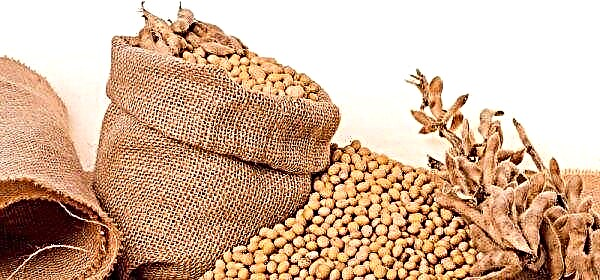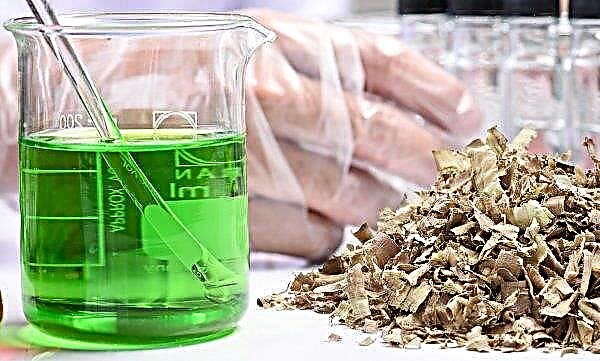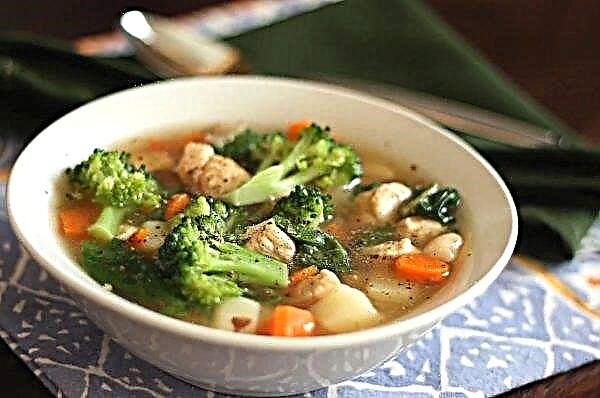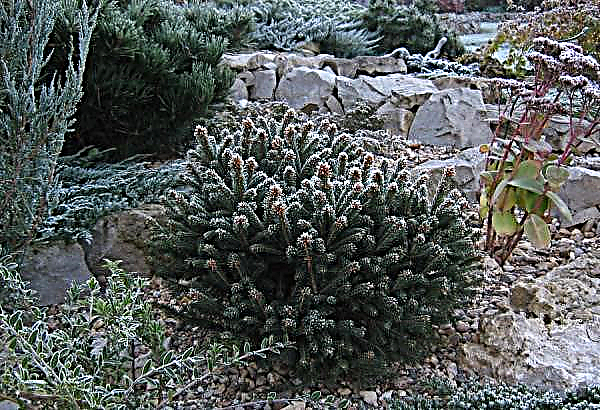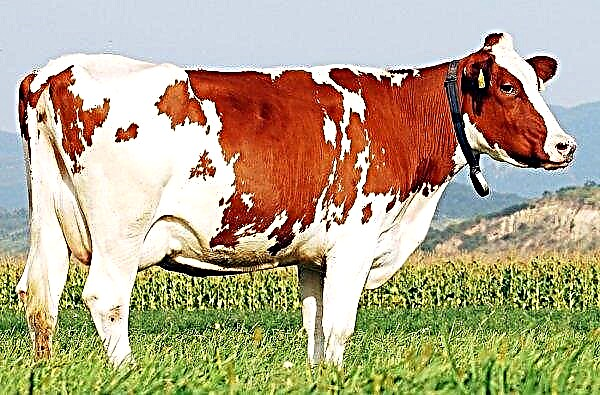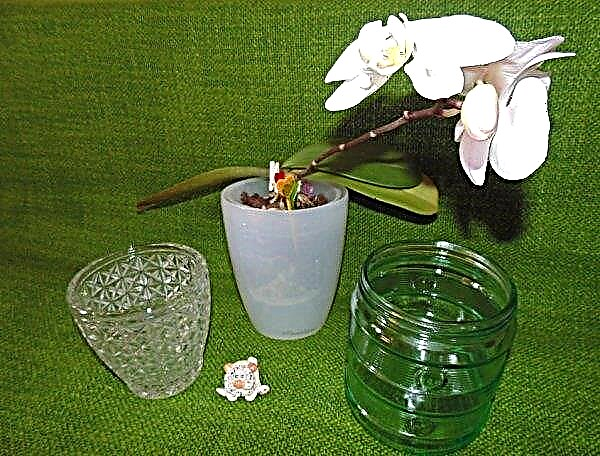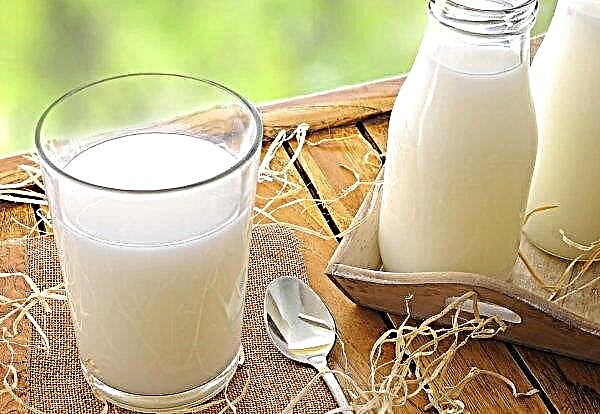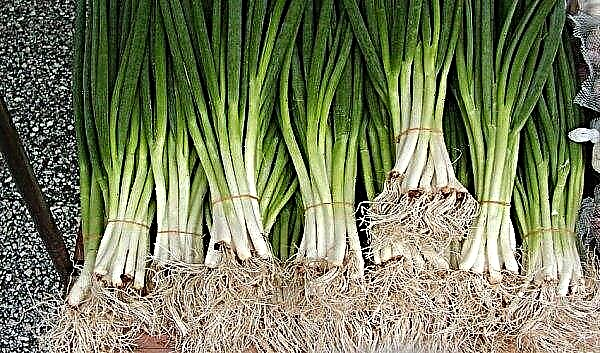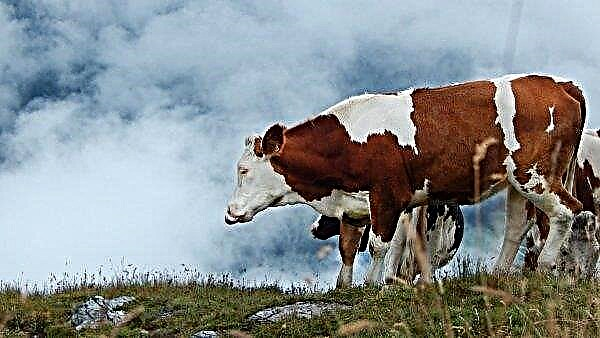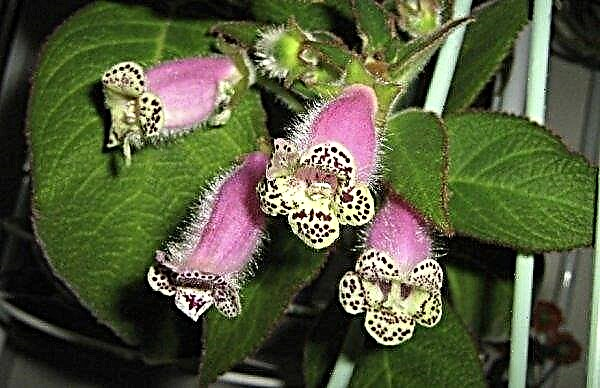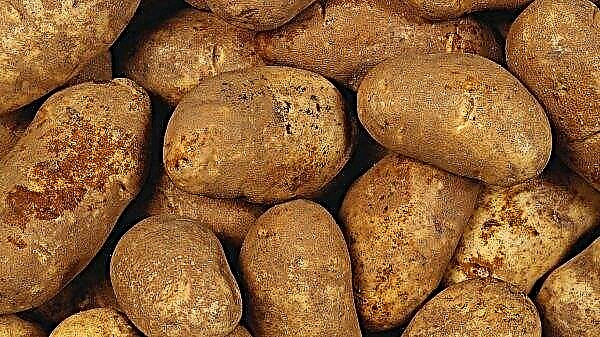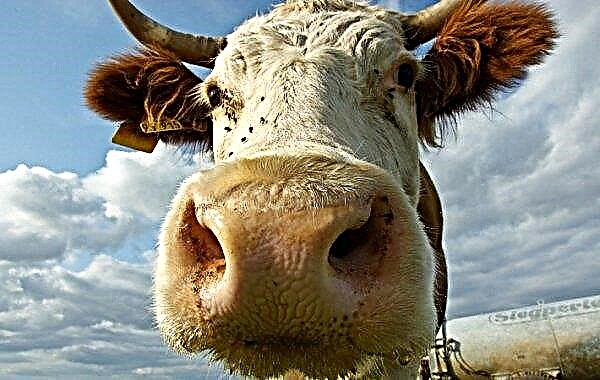In order to grow healthy currant bushes and enjoy tasty and healthy berries every year, you need to choose the right variety. It must be resistant to disease, frost and need standard care procedures. All these requirements correspond to the variety Blessing, which relates to domestic selection.
Description of Blackcurrant Variety Blessing
If we consider the description, then the variety of blackcurrant Blessing refers to highly productive crops. It has high rates of resistance to diseases and parasites, and also gives a stable crop. Low whimsical care and resistance to frost allow you to grow this variety throughout the country. The life span of the bush is 10-15 years.
Selection history
Blackcurrant variety Blessing was bred at the end of XX century. The country where breeding was carried out is Russia. In 2002, culture was included in the State Register of the Russian Federation. Zoned for all regions of the country.
Appearance, characteristics of berries
Bushes are medium-sized. The average plant height is 1.3–1.6 m. The crown is medium spread, dense. The branches are powerful, straight in shape. The bark is green, but in the 2nd year after planting, it stratifies and turns brown. The flowers are medium sized, pink in color. Leaves are not large, wrinkled, saturated emerald color.
Did you know? In mTora there are more than 340 varieties of currants. Most half are products of Russian selection.
A description of the appearance of the fruit indicates the following:
- large-fruited and oval;
- weight of berries from 0.9 to 1.3 g;
- peel of medium thickness, black;
- the number of small seeds reaches 30 pcs. in one fruit;
- the taste is sweet;
- the pulp is dense, the berries do not crack.

Blackcurrant variety Blessing refers to mid-early crops. The fruit ripens in late July. The variety is high-yielding. If you follow all the rules of agricultural technology, then from each bush collect up to 5 kg of products. If all the requirements for care are not observed, the yield decreases to 2-3 kg from the 1st plant. The pulp of berries contains a high concentration of vitamins and minerals. The chemical composition of the product is as follows:
- Ascorbic acid (0.4%).
- Sugar (up to 16.8%).
- Acids of organic origin (3-4%).
- Biotin (2.4 mg).
- Pantothenic and folic acid (0.4 mg and 5 μg, respectively).
- Calcium (40 mg).
- Potassium (360 mg).
- Magnesium (30 mg).
- Phosphorus (35 mg).
- Iron (15 mg).
- Manganese (0.2 mg).
- Zinc (0.15 mg).
 Nutrition value (per 100 g) of blackcurrant The blessing is as follows:
Nutrition value (per 100 g) of blackcurrant The blessing is as follows:
- calorie content: 44 kcal;
- proteins: 1 g;
- carbohydrates: 7.5 g;
- fats: 0.3 g;
- water: 84 g;
- fatty acids: 0.2 g;
- organic acids: 2.5 g;
- dietary fiber: 4.6 g.
Advantages and disadvantages of the variety
- The benefits of Blessing include:
- Large-fruity berries.
- Early fruiting.
- Unpretentiousness in leaving.
- Resistance to powdery mildew and rust.
- Pleasant taste of the product.
- Stable and high yield characteristics.
- Resistance to frost.
- The disadvantages of the variety are as follows:
- The need for crown formation.
- Low resistance to anthracnose and septoria.
- Tolerance to drought.
Did you know? The unpretentiousness of currants to external environmental factors allows it to grow on all continents of the world. This culture is not found only in Antarctica and Australia.
Agricultural technology
Features of agricultural technology cultivars Blessing simple. Due to the low whimsicality of planting and care, this culture can be grown not only by experienced farmers, but also beginners in the field of gardening. First you need to decide on the choice of planting material. His purchase is made from trusted sellers or in specialized nurseries. If you buy currant seedlings on the market, there is always a chance to purchase low-quality planting material (with signs of illness or a completely different variety). Only focus on plants that meet the following requirements:
- the maximum height of the seedling is 50 cm, the length of the roots is 10–13 cm;
- the absence of signs of parasites and diseases (dry root system, white or red plaque on the surface of the stem);
- the optimal age of the seedling is 1-2 years.

After purchasing planting material, it is necessary to process it. First, the root system is soaked for 3 hours in a solution of colloidal sulfur (20 g per 5 l of water). Then place the lower part of the plant in the Kornevin solution (40 g per 5 l of water) for 3-5 hours. This will stimulate the development of roots, which accelerates the time of development of the bush. When all the procedures are completed, you can begin to land.
Important! If the cracks in the seedling are smooth (without internal holes), then you can buy a plant. Otherwise — it is an indicator of pest exposure.
Seat selection and landing
The optimal time for planting blackcurrant varieties Blessing is mid-September. This allows the bushes to acclimatize and prepare for the upcoming frosts. First you need to choose the right place for planting. Variety Blessing is a hygrophilous plant, so the site should be in low and humid places.
Keep in mind that the plant needs a lot of sunlight, so planting material is planted in lighted areas protected from gusts of wind and drafts. For reliable protection from windy weather, you can plant bushes next to fruit trees, barriers or shrubs. The distance between cultures should be 2-3 m. The soil is chosen with a neutral acid-base balance (not more than 6.5). Blackcurrant variety grows best on loamy lands or in chernozems.
After choosing a seat, they begin to prepare it. Dig the earth and bring in 20 kg of humus per 1 m². After 2 weeks, when the fertilizer is absorbed into the soil, they begin to mark the site. The planting pattern is 2 × 3 m. The size of the hole should be 50 × 50 cm. A mixture of humus (5 kg), mullein (300 g), superphosphate (300 g) and wood ash (200 g) are poured inside the landing pit. To protect against groundwater (if their depth is less than 1.3 m), crushed stone is poured into the bottom, which will be used as drainage.
The landing process is as follows:- Inside the hole, on top of the fertilizer, pour 5 l of warm water (temperature +50 ... + 70 ° C).
- Vertically set the prepared seedling and level its roots.
- Sprinkle with the topsoil remaining after digging the hole.
- Tamped to avoid the formation of voids.
- Pour 10 liters of water.

Care
Watering should be plentiful and carried out at each stage of bush development:
- in late May, when the active growth of shoots begins;
- in early July, with the formation of berries;
- at the end of shoot growth, when the laying of buds for the crop for the next season begins;
- September 20–25, to improve the quality of wintering.
At least 20 liters of warm water are poured under each bush. Its temperature should be in the range of +50 ... + 60 ° С. Cold water can cause decay of the root system, and hot water can damage the processes on the roots.
Large-fruited black currant of the Blessing variety needs a large amount of organic and mineral fertilizers. Since nutrients were introduced into the soil before planting, the following fertilizing is carried out from the second year after planting. In the spring, 10 l of ammonium nitrate solution (400 g per 10 l of water) is poured under each bush. In mid-June, 4 l of superphosphate is irrigated (300 g per 10 l of water). In autumn, 20–25 kg of humus is added per 1 m².Important! Lack of watering affects the quality of the fruit. They become smaller and more acidic.

Pest and Disease Control
Variety Blessing may be affected by anthracnose. This disease consists in the appearance of shiny reddish mounds on the surface of the leaves, which eventually provoke the decay of the deciduous cover and a decrease in yield. The fight against this fungal disease consists in spraying with copper sulfate (30 g per 10 l of water) or “Fundazol” (200 g per 10 l of water).
Signs of septoria are the appearance of gray spots on the foliage. After a few days, the grayish patches become covered with a brown border, and the sheet plate falls off. The treatment of the disease consists in spraying the bushes with Previkur (2 ampoules per 5 liters of water).
To deal with a pest such as aphids, it is necessary to use solutions of "Actellica" (40 g per 5 l of water) or "Karbofos" (100 g per 5 l of water). In the fight against ticks use "Phosphamide" (300 g per 10 liters of water). Spraying against diseases and pests is carried out with an interval of 10 days, until the signs of infection have completely disappeared.
As a preventive measure, the following recommendations should be followed:
- Remove weeds regularly and loosen the topsoil. The more space around the plant, the less space for the development of parasite larvae.
- Adhere to time intervals for watering and top dressing. An insufficient or excess amount of moisture and fertilizers contributes to the development of diseases, because the immunity of the bush decreases.
- In spring, spray currant plants with boiling water (water temperature - +90 ... + 95 ° C). This will eliminate the larvae of pests that have not died from frost.

Trimming and shaping a bush
Pruning is carried out in the spring, before the buds open. It is necessary to remove branches that have been damaged by frost. Dry, diseased and cracked shoots are also removed. This will allow the bush to spend all the nutrients on the formation of new branches, and not on the restoration of old ones.
The formation of the bush consists in pruning old branches when their age exceeds 6 years. On the bushes should remain 3 shoots of each age. This will increase the quality of fruiting and harvest. If the crown becomes so thick that sunlight does not penetrate into the bush (this can be seen by the ripening rate of the berries), then in autumn, after harvesting, 1/3 of the branches are cut. The more sun penetrates the inside of the shrub, the faster the ripened crop appears.
Wintering
Based on reviews and descriptions, the variety Blessing is characterized by high winter hardiness. Bushes withstand frosts to -35 ° C. Perhaps a slight freezing of the kidneys, if the thaw comes early, and after a while (2-3 weeks), the frost will return again.
To prevent this from happening, you need to take care of the shelter of plants. First, shrubs are watered with 3 l of superphosphate solution (200 g per 5 l of water). It will create a barrier on the soil surface through which frosts do not penetrate and do not disturb the structure of the roots. After this, the trunk circle is covered with an abundant layer of mulch (within 30–35 cm). For mulching use a mixture of straw and humus, fallen leaves or branches of needles.
Harvesting and transportation of the crop, shelf life of berries
Berries of blackcurrant Blessing is collected gradually, because they do not differ in friendly ripening. Harvesting lasts from late July to mid-September. If you are unable to collect the fruits on time, you can postpone this procedure for 5-7 days. Products do not crack or fall off when overripe. Taste is also not lost.
It is possible to transport products over long distances, since the shelf life of currants reaches 3-4 weeks. Fruits should be stored in cool, well-ventilated and protected from the sun places (refrigerator, cellar, pantry). Shelf life can be improved by placing the berries in the freezer. In this form, they are stored for up to 6 months.Important! If the berries are ripened, the amount of ascorbic acid is reduced in them (by 40–60%), so there is not much benefit from them.

Some housewives prefer to store the products of the black currant variety Blessing in the form of blanks. To do this, they make stewed fruit, preserves and jams from it. In the form of blanks, products are stored for 2-3 years.
So, now you know how to grow tasty and healthy berries of black currant of the Blessing variety on your site. The procedure for its agricultural technology is simple, and even beginners can do it. Even minimally adhering to the rules for care and planting, in the summer you can collect up to 2 kg of products from the bush.

